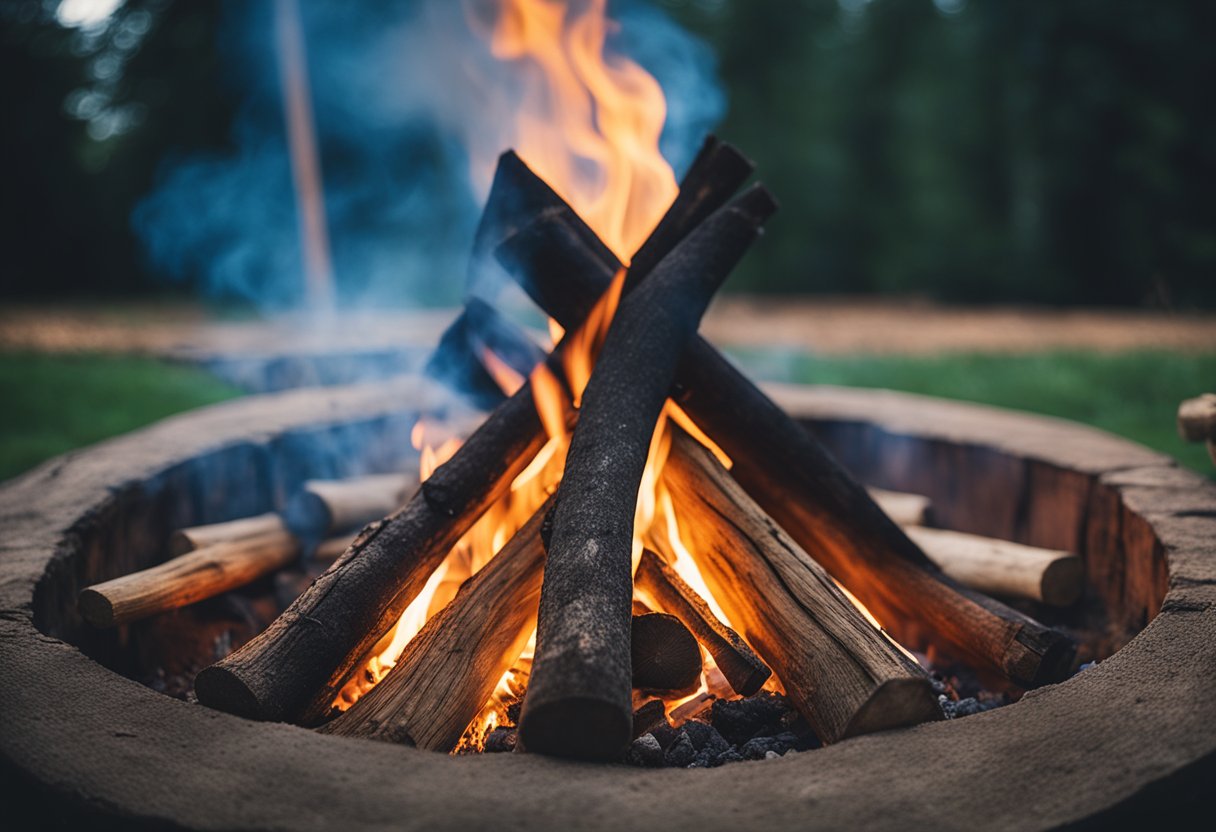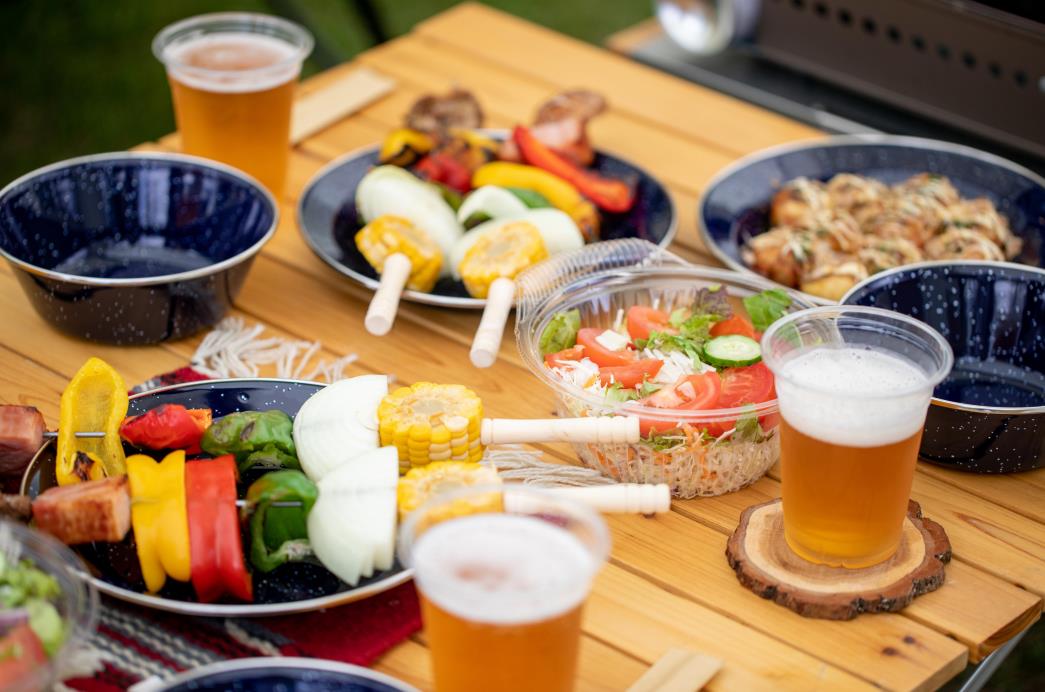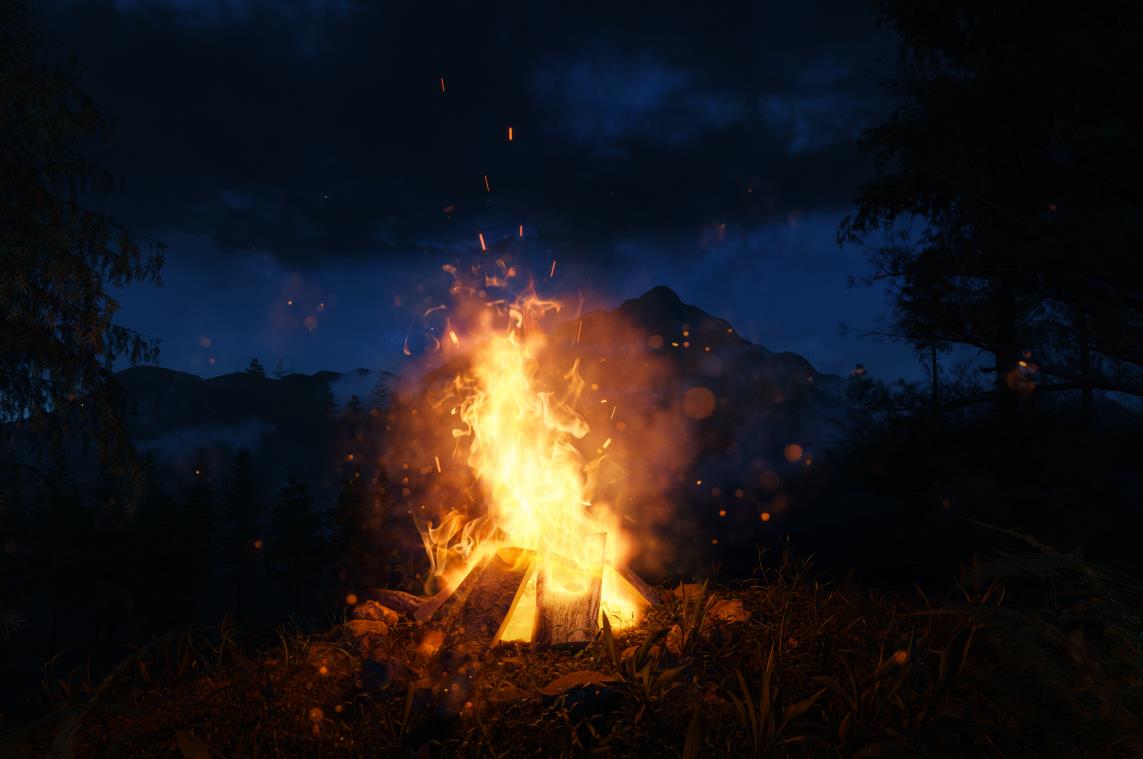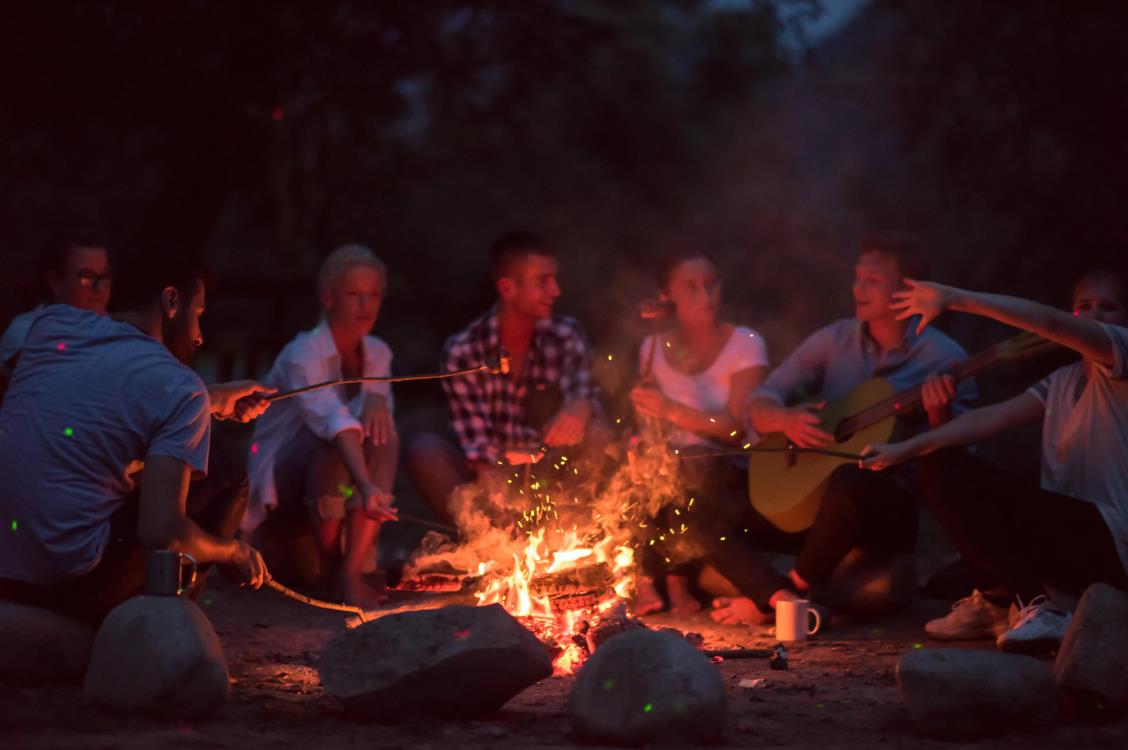Embarking on your first camping adventure can be both exciting and a bit daunting. With so many options for gear, destinations, and activities, it’s essential to have a basic understanding of camping fundamentals to ensure a fun and safe experience. As a beginner, you may be unsure about what to expect or what to prepare. This guide is here to help you navigate the world of camping with ease.
First, you’ll need to choose the type of camping experience you’d like to have. Whether it’s a serene escape to a remote location or a family-oriented campground with amenities, selecting the right destination is key. Research campgrounds based on your interests and desired level of comfort, as well as their proximity to activities and attractions.
Once you’ve settled on a destination, it’s time to gather the necessary gear and supplies. A tent, sleeping bag, and basic cooking supplies are essential for any camping trip. Additionally, you’ll want to pack clothing and other items suitable for the local weather conditions. Throughout your preparation, it’s crucial to strike a balance between having everything you need and not overpacking, as you’ll have to transport your gear. Now you have a general idea of what to expect from a camping trip, read on for a complete guide!
Table of contents
Choosing the right campsite
Types of camping
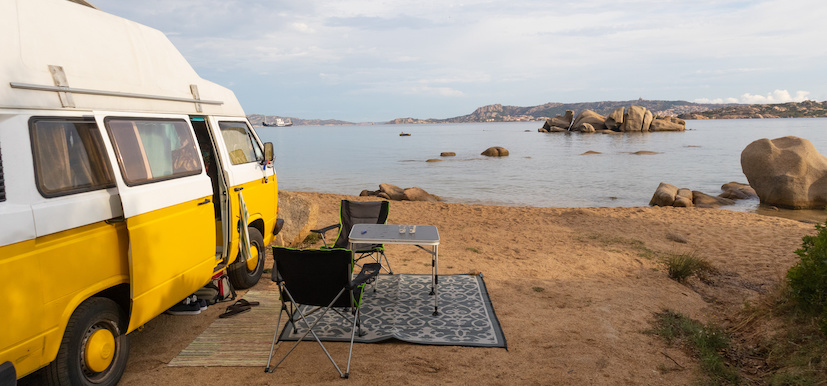
When planning your camping trip, it’s essential to consider the type of camping that suits you best. There are several options, such as:
- Camp grounds: These are designated areas with amenities like restrooms, showers, and picnic tables. Some popular options include KOA and local parks.
- Dispersed camping: Also known as primitive camping or wild camping, dispersed camping occurs outside of designated campgrounds. This option provides an opportunity to experience nature in a more secluded setting.
- Backcountry Camping: If you’re up for an adventure, backcountry camping involves hiking into the wilderness and setting up camp in remote locations.
Booking and permits
Securing your spot is an important step in planning your trip. For campgrounds, it’s a good idea to book a reservation in advance, especially at popular destinations. If you prefer dispersed or backcountry camping, research the area beforehand to determine if permits are required. Contact local authorities or park rangers to obtain the necessary information and permits.
Selecting a spot
Once you’ve chosen your camping style and secured permits or reservations, it’s time to pick the perfect campsite. Here are some factors to consider:
- Terrain: Look for level ground to ensure your tent will stay in place. Avoid areas prone to flooding, such as near a river or at the base of a mountain.
- Shade: Setting up camp near trees can provide shade during hot summer days. Be cautious of potential hazards like falling branches, especially in windy conditions.
- Water source: Choose a location near a water source like a river or lake for easy access to water. Just remember to maintain a safe distance from the water’s edge.
Camping gear essentials
When you’re just starting out camping, it’s crucial to have the right gear to make your trip enjoyable and keep you comfortable. Here’s a must-have list to some essential camping gear for beginners.
- Tent: A durable and weather-resistant tent is a must for a good night’s sleep. Choose a size that accommodates the number of people in your group and has enough space for your gear.
- Sleeping bag: A high-quality sleeping bag is vital for a comfortable night of sleep. Consider the temperature rating and the type of insulation when selecting your sleeping bag.
- Sleeping pad: Add a layer of comfort and insulation between you and the ground with a sleeping pad. There are different types to choose from, such as air pads, self-inflating pads, and foam pads.
- Backpack: A sturdy backpack is essential for carrying all your camping gear. Choose one with comfortable straps, plenty of pockets, and the right size for your needs.
- Clothing: Pack various layers of clothing, including a base layer, a warm middle layer, and a waterproof rain jacket. Opt for quick-drying and moisture-wicking fabrics. Don’t forget a hat and a good pair of hiking shoes!
- Cooking supplies: To cook meals at your campsite, you’ll need a portable camp stove, fuel, cookware, and utensils. Remember to bring along a cooler with ice or ice packs to keep perishable food cold.
- Water: Ensure you have enough water for the duration of your trip. Bring a reusable water bottle, and if you’re camping in a remote location, a water purification system such as a filter or purifier.
- Lighting: A headlamp and a lantern are essential for navigating and illuminating your campsite after dark. Headlamps provide hands-free lighting, while lanterns offer ambient light for the campsite.
- Pillow: For added comfort while sleeping, pack a camping pillow. These pillows are lightweight, compact, and designed for outdoor use.
Remember, packing the right camping gear essentials will ensure a comfortable, enjoyable, and stress-free adventure in nature.
Camping Cooking Knives
Get 11% off and free shipping – limited time only!
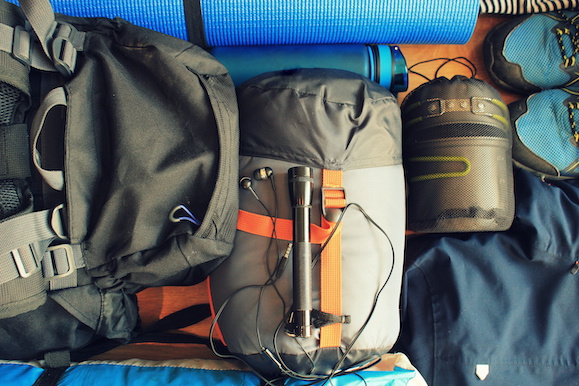
Setting up camp
When you arrive at your campsite, it’s essential to set up a comfortable and secure shelter to enjoy your stay. Follow these simple steps, and you’ll achieve that cozy outdoor experience.
First, select an area to set up your shelter; look for level ground clear of rocks and roots. Ensure you’re not too close to water sources or in a low spot where water might pool if it rains.
Setting up sleep tent
Setting up a tent involves laying the tent out flat, connecting the poles, and securing the tent to the ground with stakes.
- Unpack your tent and lay it out flat on the ground with the door facing your desired direction.
- Assemble the tent poles and insert them into their corresponding sleeves on the tent.
- Attach the tent’s clips to the poles, then secure the rain fly on top, if included.
- Use stakes to securely anchor the tent corners into the ground. Ensure the tent floor and walls are taut.
Hammock setup
If you’re using a hammock, find two sturdy trees about 10-15 feet apart.
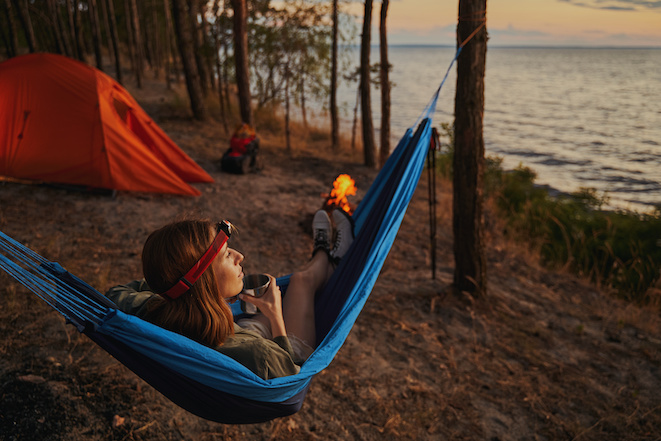
- Attach the hammock straps to each tree, ensuring they are level and secure.
- Connect your hammock to the straps’ loops using a carabiner or knot.
- Adjust the tension of your hammock by tightening or loosening the straps as necessary.
To enhance your sleeping comfort, consider using an air mattress or sleeping pad inside your tent or underneath your hammock. This will provide insulation and cushioning from the cold, hard ground.
Make sure to keep a lantern or headlamp easily accessible for nighttime outdoor activities and navigating your campsite in the dark.
Now that your camp is set up, you’re ready to focus on enjoying your adventure and exploring nature’s beauty around you.
Camp cooking and meals
Camping is an exciting adventure, and one essential aspect is camp cooking. Preparing meals while camping can be a delightful experience, as long as you have the right equipment and ingredients. In this beginner’s guide, we will cover the essentials for a successful camp cooking experience.
First, plan your meals before heading out on your camping trip. This will help you create a shopping list of ingredients and determine the necessary kitchen items. Make sure to choose easy-to-cook and non-perishable foods.
Packing the essentials is crucial for a seamless cooking experience. A portable camping stove, fuel, matches or a lighter are must-haves for preparing hot meals. Additionally, cookware such as pots, plates, cups, and utensils should be brought along. Cast iron cookware is an excellent choice for campfire cooking, as it is durable and retains heat well.
You should also remember to pack necessary cleaning items. Dishwashing soap, sponge, and a drying rack will simplify the cleaning process and maintain a tidy campsite kitchen. Ziploc bags and reusable containers are excellent for storing leftovers or prepped ingredients.
Cooking methods can vary depending on your camping style. If you’re using a camping stove, be mindful of the type of fuel required, such as propane or liquid fuel. Always practice safety precautions when handling a stove, matches, or lighters. If you’re cooking over a campfire, prepare a designated fire pit and follow proper campfire regulations. Using a grate or tripod can make cooking over a campfire much more manageable.
As a beginner in camp cooking, starting with simple meals is a wise choice. Popular camping meals include sandwiches, pasta, hot dogs, and campfire foil packets. As you gain experience, you can venture into more elaborate recipes to elevate your camp cooking experience.
Remember, camp cooking can be an enjoyable and fulfilling experience that brings friends and family together. With the right equipment, planning, and enthusiasm, you’ll soon be cooking gourmet meals in the great outdoors.
Clothing and footwear
When planning your camping trip, it’s important to think about the clothes and shoes you’ll need. Dressing appropriately will not only keep you comfortable but also ensure a great outdoor experience.
Layering is key. You’ll want to start with a good base layer made of moisture-wicking material. This will help keep you dry and regulate your body temperature. Opt for both lightweight tops and bottoms that can be easily layered.
For your outer layer, pack a rain jacket or a lightweight water-resistant windbreaker. This is an essential item since you can never predict when a rainstorm may hit. To keep your head protected, include a wide-brimmed hat to shield you from the sun and rain.
When it comes to footwear, choose supportive and comfortable hiking shoes that provide good traction. These should be suitable for walking on uneven terrain and offer some water resistance. For relaxing at the campsite, bring a pair of sandals or casual shoes for lounging around.
In addition, consider packing the following items:
- Socks (preferably moisture-wicking)
- Gloves or mittens to keep your hands warm
- A headband or beanie to keep your ears warm
- Sleepwear suitable for the temperature range of your camp site
Remember, planning your clothing and footwear for a camping trip should not be an afterthought. By giving it proper attention, you will help ensure your camping experience is comfortable and enjoyable.
Campfire safety

Camping is a fantastic way to enjoy the great outdoors, and a cozy campfire can enhance the experience. However, campfire safety is crucial for a worry-free adventure. Here are a few friendly reminders to ensure your campfire remains safe and enjoyable.
To begin, choose a proper site for your campfire. Look for a fire pit or fire ring in established campsites. Ensure it is at least 15 feet away from tents, trees, and other flammable materials. Clear any debris, and create a barrier of rocks (if not provided) to contain the fire.
When gathering firewood, remember to use only small sticks and branches that easily snap, as larger logs take too much time to burn. Do not cut down trees or remove branches from living trees; find firewood on the ground. Keep your firewood pile organized and at a safe distance from the fire.
To light your campfire, have a reliable ignition source like matches or a lighter on hand. Start with small twigs and gradually add larger pieces of firewood as the fire grows. Avoid using flammable liquids, as they can lead to dangerous fires.
Once your fire is burning well, it’s time to enjoy various activities such as cooking and roasting snacks. Prioritize campfire safety by never leaving your fire unattended; always have someone nearby to monitor it. Keep a bucket of water or a shovel with sand nearby to extinguish any stray flames quickly.
Use the campfire for heat, light, and cooking as needed, but avoid overcrowding the fire with too many activities at once. Maintain a manageable fire size to prevent it from becoming hazardous.
When the night winds down, ensure that you thoroughly extinguish your campfire. Spread the ashes out and douse them with water or cover them with sand. Stir the remains to make sure all embers are completely out. Doing so protects the environment and ensures the safety of future campers.
Following these campfire safety tips will help you and your fellow campers have a fun, safe, and memorable camping experience.
Camping activities and fun
Hiking is a fundamental camping activity that allows you to explore nature and enjoy the outdoors. You may discover breathtaking views, streams, and wildlife. Bring a map or use a trail app on your phone to avoid getting lost. Make sure to wear comfortable shoes and pack essentials like water, snacks, and a first aid kit.
Backpacking adds a layer of adventure to traditional camping. It involves carrying all your gear in a backpack and venturing further into the wilderness. Plan your route based on your experience level and make sure to research any permits or regulations you may need in the area.
While at your campsite, indulge in various outdoor activities such as fishing, bird watching, or canoeing. Remember to carry a camera to capture your memories and experiences.
A successful campout includes fun and games for families and friends to enjoy together. Bring along a deck of cards, a frisbee, or even a portable board game. Sharing stories and laughter around the campfire is a great way to bond and create lasting memories.
Some other outdoor activities to consider during your camping trip include:
- Star gazing: Just lie down on a blanket and admire the beauty of the night sky.
- Nature scavenger hunt: Create a list of items to find in nature and have fun searching for them.
- Geocaching: Use a GPS device or smartphone app and explore the wilderness while hunting for hidden treasures.
Remember, the key to a memorable camping trip is to embrace the adventure and cherish the moments spent in nature.
A camper’s wrap-up
Camping, whether with friends, family, or solo, can be a rewarding experience as it brings you closer to nature and offers numerous benefits. From enhancing friendships and reconnecting with loved ones to the mental and physical rejuvenation that comes from the great outdoors.
Campout events are ideal for beginner campers, as they often provide guidance and support from experienced campers. Even consider trying glamping for a more luxurious stay in the wilderness. Whether camped out in the mountains or nestled in a lush forest, comfortable camp chairs make relaxation almost effortless.
As you venture into the exciting world of camping, always remember to respect your surroundings and minimize your impact on the environment. So, grab your gear, invite some friends, and enjoy the ultimate outdoor adventure!







